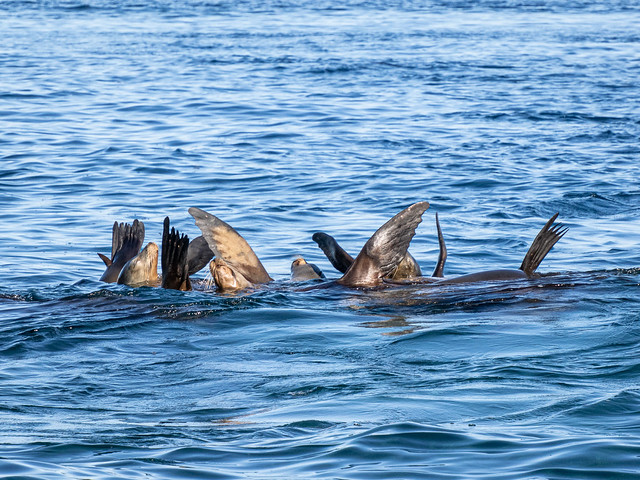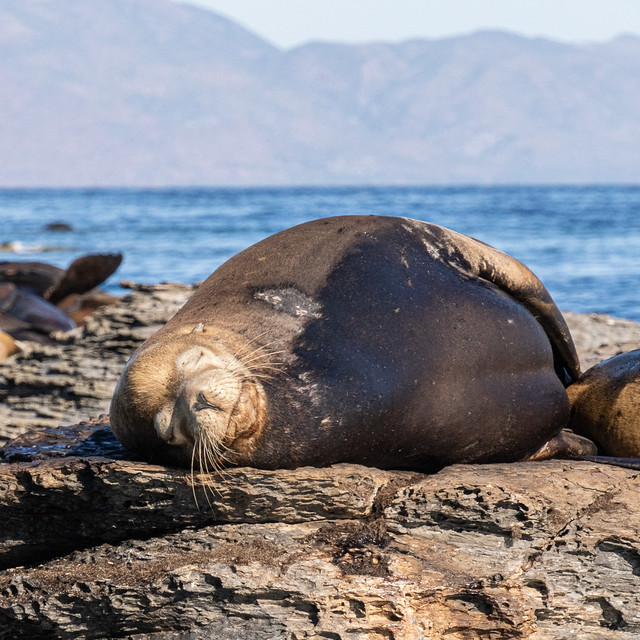The highlight of our boat trips out to dive sites was encountering two Bryde's whales, a mother and a young one. Bryde's are related to Blue and Humpback whales. Like them, it's a baleen filter feeder. They are "medium" sized, which was still plenty big. Spring is the better whale watching season here, but the water is too cold for pleasant diving. Occasionally we see whales in the fall diving season but it's usually a brief glimpse from a long distance. This time the whales hung around for quite a long time and swam around and under our boat. Even the locals were excited at this extended close encounter.
It's hard to do justice to the encounter with still photographs. Shelley's video gives a better feel.
We were also lucky to see a large group of dolphins on our first day. I didn't have my camera that day, but Shelley got a brief video. We saw individual dolphins other days, but this was the only big group.
Sea lions are a much more reliable sighting. Our first day of diving, Shelley figured we'd be going to the sea lions, a popular dive. But they told us, no, we were going to one of the farther islands. Except the wind turned out to be wrong, so we went to the sea lions after all. Over our eight days of diving we ended up going back to that site several times. It's an interesting area, with intricate rock formations and Blue and Brown footed boobies.
Depending on the wind, your first clue that you're approaching the sea lions is often the smell.
Sea lions have a curious habit of floating with their fins in the air. This is known as "sailing" and is a way of regulating their temperature.
They don't breed here, so they're quite mellow.
It's always fun when they come to check you out underwater. They can be quite curious and inquisitive sometimes. Although having them suddenly zoom by at high speed can be a bit disconcerting.
And that wraps up this dive trip. As always we enjoyed Loreto and the underwater world nearby.










No comments:
Post a Comment